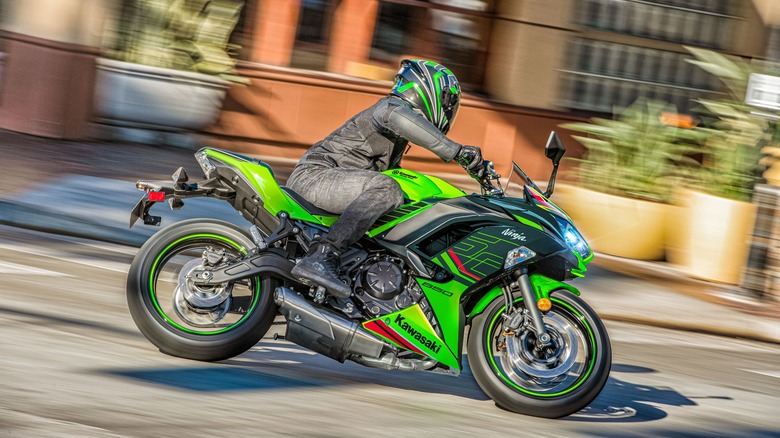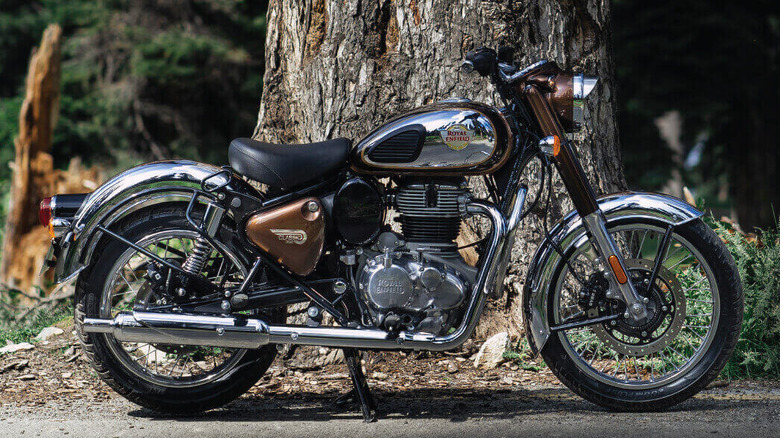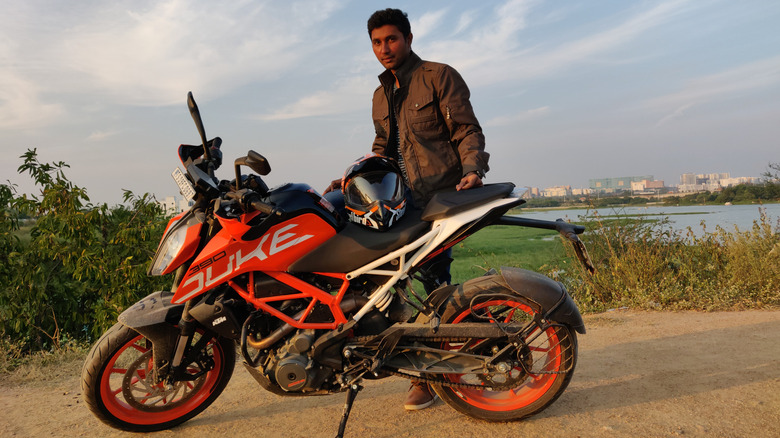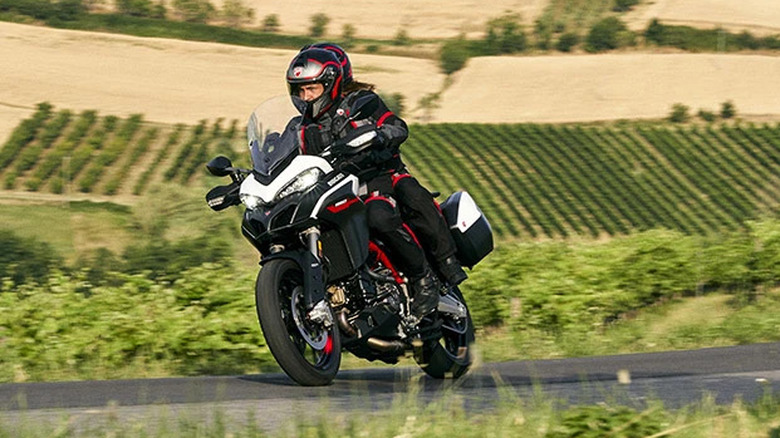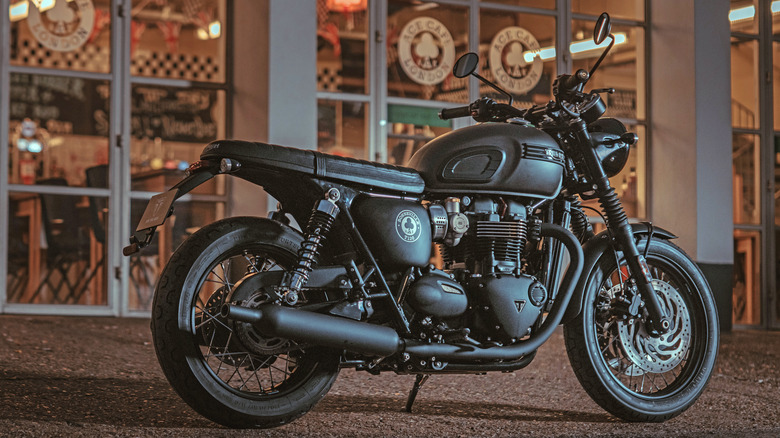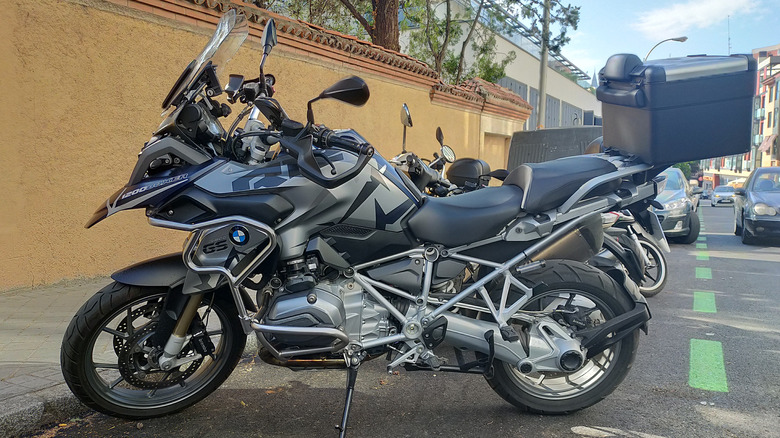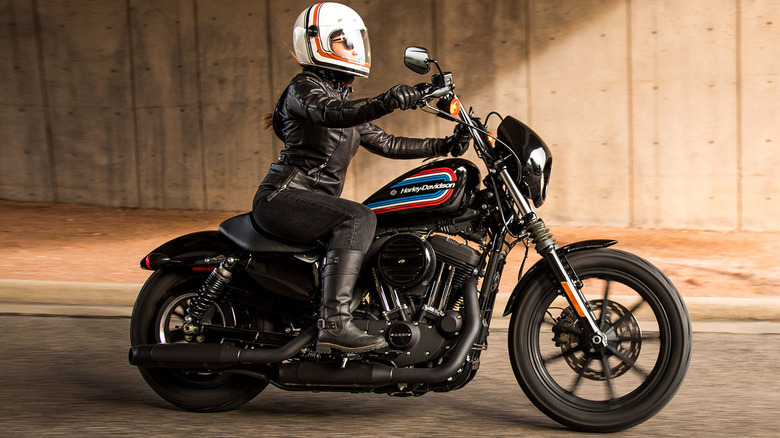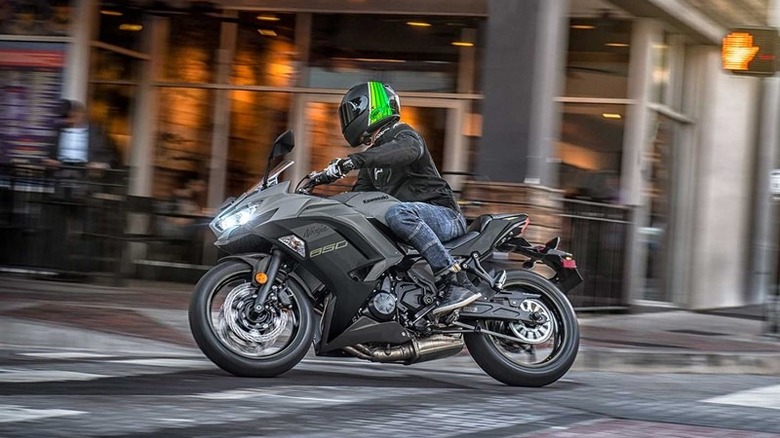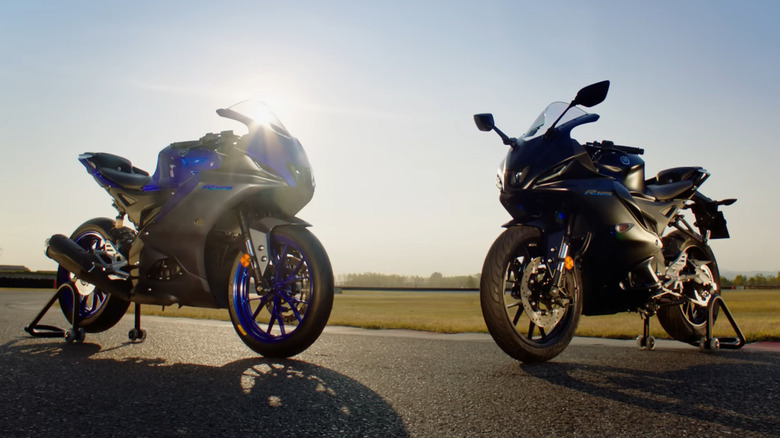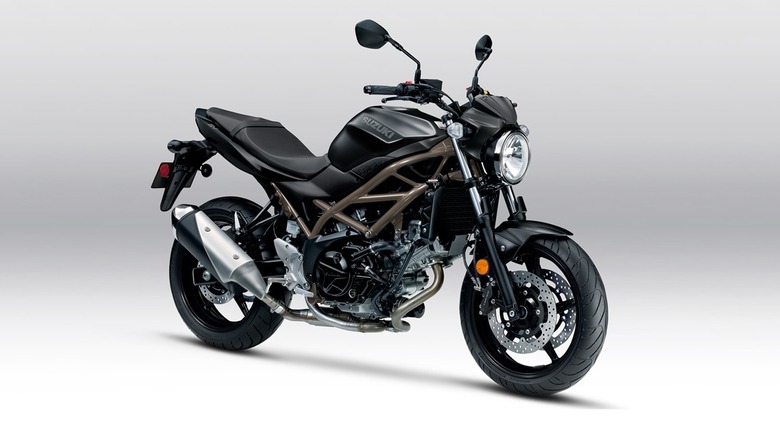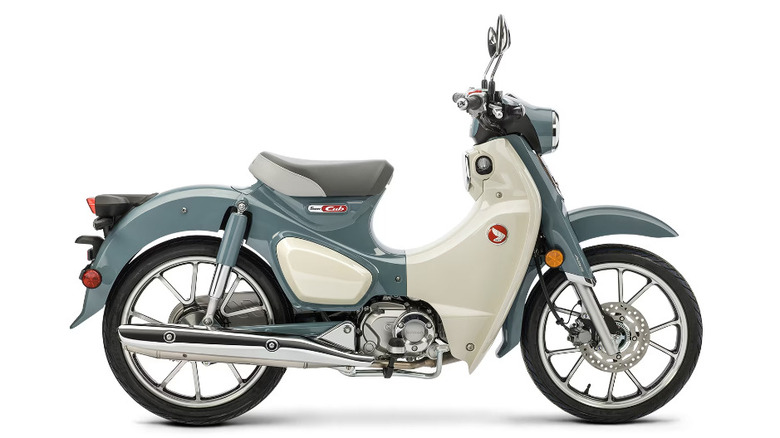The Most Reliable Motorcycle From Every Major Brand, Ranked
When choosing a motorcycle, reliability should be a chief consideration. Bikes are far more vulnerable on the road than their four-wheeled counterparts, and mechanical or electronic failures can be extremely dangerous. A trustworthy machine offers protection from a lot more than the relatively minor inconvenience of being stranded on a highway, and this is why regular maintenance is all the more essential for two-wheelers.
Reliability remains a complex subject, especially concerning a machine as sophisticated as a motorcycle. When buying a used bike, it is wise to insist on a full service history and ensure any new purchase receives a comprehensive check from a qualified mechanic before you venture out on the road.
Here, we have selected the standout models from each brand, based on reliability reports and reviews from multiple sources, including Motorcycle News, Rider Magazine, WebBikeWorld, and others. We also referred to the 2015 Consumer Reports survey of motorcycle reliability by brand and the recent poll conducted by Riders Share to help us compile our ranking.
10. Royal Enfield: Classic 350
While RE is not exactly renowned for the reliability of its products, it is a major player in the motorcycle industry, having revolutionized the small- to mid-capacity bike segment. The Classic 350 was a continuation of the iconic Bullet model that remains tried and trusted in its latest iteration, with some glowing reports from reviewers and owners alike.
I first used a Royal Enfield Classic 350 on a trip to Ladakh in the Indian Himalayas. This was a well-used rental bike with over 35,000 miles on its odometer. While I had no idea of its history regarding reliability, it did exceptionally well on the almost 2,000-mile trip without so much as a minor complaint, even as it started gasping for air on the approach to Khardung La at around 17,600 feet.
Of course, the average Classic 350 isn't expected to repeatedly venture into high altitudes over rocky ground over the course of its lifetime. However, even as a transport staple in Indian villages and cities or as a small-capacity leisure bike in Europe and the Americas, it has become known as a sturdy and reliable single-cylinder modern retro that is easily and cheaply serviced and repaired.
The 2022 year model of the Classic 350 has been described by Motorcycle News as "incredibly well built," giving it a maximum of five stars in its reliability segment, and owners don't report any significant reliability issues other than a speedometer that tends to stick in hot conditions. It also performs well on the road, and this modern reworking of an old favorite is as likely to be praised by veteran YouTube reviewers as it is by new riders, despite its relatively low power output.
9. KTM: 390 Duke
Every once in a while, a motorcycle comes along that is described as a "game changer," and that moniker could undoubtedly be applied to KTM's "Corner Rocket," the 390 Duke. While KTM is renowned for its larger capacity – and more expensive — bikes, this sprightly entry-level naked roadster has become known for its single-cylinder simplicity and reliability.
The little Duke is built in Asia, where it is ideally placed to sell in this lucrative market, as smaller capacity, nimble bikes are often a primary mode of transport for the average citizen. As such, the market demands both affordability and durability from these machines, and few in this segment represent value for money and reliability better than the KTM 390 Duke.
KTM has been generous with features for such an affordable bike. These include rider modes, a slipper clutch, ride-by-wire throttle, ABS brakes (which include a sporty "Supermoto" mode), LED lights, and a comprehensive 5.2-inch TFT display with Bluetooth connectivity. In short, the bike leaves little to be desired for even the experienced rider, but how well is all this put together?
Thankfully, KTM was diligent when it came to build quality, and it appears that no corners were cut when making the 390 Duke. This is reflected in its reliability, and after over ten years in production, with no significant updates since 2017, the only red mark on its report card was a headlight issue, which was fixed with a software update. While it has been said that services and maintenance may be a little costly for its segment — this is a premium branded bike, after all — major repairs are uncommon, even after many thousands of miles on the road.
8. Ducati: Multistrada 950
When Ducati invented its 937cc Testastretta V-twin engine, it quickly realized it was on to a good thing. The powerplant delivered an ample 113 brake horsepower and torque in spades, and felt smooth and positive across the rev range. Unsurprisingly, it subsequently appeared in several Ducati models, including the SuperSport, the Hypermotard 950, the Monster, and the Multistrada 950 adventure bike.
The Multistrada was a departure for Ducati, which is far better known for its high-revving sport bikes and naked models. However, to keep up with European rivals BMW, with its formidable GS range, and Triumph, with its Tiger line of adventure bikes, the Italian brand knew it had to pull something pretty special out of the bag if it was to be taken seriously within this increasingly popular segment.
Enter the Multistrada 950, which came like a bolt out of the blue in 2017 and quickly became a major player within adventure biking circles as a competent all-rounder, well-equipped with features and accessories. Unlike its big brother, the Multistrada 950, it was far more accessible, economical, and reliable to the average rider.
The build quality of the Multistrada 950 was impressive, buoyed by the inclusion of quality third-party suppliers like Brembo, Sachs, and Bosch. Ducati would put its money where its mouth was concerning reliability by suggesting service intervals of a whopping 9,000 miles. This was unprecedented within its class and, as it turned out, entirely justifiable, with Motorcycle News giving the bike a maximum five-star rating for reliability, and many satisfied owners chiming in with their two cents of praise for this dependable go-anywhere machine.
7. Triumph: Bonneville T120
The modern retro motorcycle has seen an impressive renaissance in recent years, thanks in no small part to the affordable, mid-size offerings from brands like Royal Enfield and BSA. However, one bike in particular has endured for over 70 years as countless trends went in and out of style, and that is the Triumph Bonneville T120.
The modern iteration of the T120 lineage is far removed from that which rolled off the Hinckley, UK, production line in 1959, with plenty of contemporary upgrades in keeping with the expectations of today's riders. These include up-to-date tech, such as traction control and ABS, upgraded engines, and improved suspensions for better handling.
The T120 is also far removed in terms of geographical location compared to the original, as new machines are now assembled in Thailand. While this has significantly reduced production costs and helped the classic marque expand its product line in recent years, it begs the question: How has this affected the overall quality of the Bonneville T120?
Thankfully, Triumph has actually tightened up its quality control measures in its overseas production, and the new Bonneville line is very well put together. This is just as well, given the competition, especially from quality marques like Moto Guzzi and Kawasaki with their V7 and W800 models. But Triumph needn't worry, as the T120 is more than a match for its closest rivals, with impressive 10,000-mile service intervals, and most reported issues having to do with easily serviceable parts, leaving this classic icon's reputation thoroughly intact.
6. BMW: R1200GS
The GS range of BMW adventure bikes has long been considered the top dog in a competitive segment. After the R1150GS was thrust into the spotlight as the chosen ride for the 2004 "Long Way Round" documentary, starring Ewan MacGregor and Charley Boorman, it was proven to be a hardy world traveler, carrying the already-lauded badge of BMW Motorrad. When this was succeeded by the larger-capacity R1200GS that same year, it quickly replaced its 1150cc sibling as the most coveted ADV in the market.
The build quality of the R1200GS was, as expected, high, in line with other BMW motorcycles, but it was over-engineered to tackle harsh offroading conditions. Most of these bikes are used for long-distance touring and are rarely exposed to dirt, so these machines stand in good stead for exceptional long-term reliability. Its 1,170cc boxer twin engine and shaft final drive have their roots in a long line of BMW motorcycles with this configuration, tracing back to the early 20th century. Hence, the R1200GS engine and drivetrain resulted from over a century of research and development.
While its larger successor, the R1250GS, has reportedly suffered persistent electronics issues over long-term use, the R1200GS was a highly regarded generation in the venerated GS adventure bike lineage. It is likely BMW's most reliable bike to date and is often considered to be among the best BMWs ever made. With that said, it's too early to comment on the dependability of the latest R1300GS model, which features an upgraded engine that is at once more powerful and over 8.5 pounds lighter. Time will tell if the Munich marque will outdo itself with its latest generation flagship GS.
5. Harley-Davidson: Sportster 1200 Iron
Surprisingly, Harley-Davidson beat all its European rivals, including Triumph, Ducati, and even the much-lauded BMW, in Consumer Reports' 2015 motorcycle reliability survey. This was undoubtedly encouraging news for the brand, and it continued its excellent work further into the decade with the release of its uber-reliable new Sportsters, including the 1200 Iron model.
Introduced in 2018, the Sportster 1200 Iron beat its smaller cousin, the popular 883, in value, performance, build quality, and dependability. This outstanding machine helped to eradicate the old reputation of unreliable, clunky, oil-leaking hogs and ushered in a bright future for the brand. The combination of mid-position footpegs, raised handlebars, and a comfy solo seat made for all-day comfort in the saddle, with adequate braking, better cornering, and decent mileage, despite its "peanut" style scaled-down fuel tank.
While the power of the Sportster 1200 Iron is lackluster at just 66 brake horsepower on an almost 550-pound bike, it makes up for its misgivings by likely being the most reliable Harley Davidson ever made. Unlike many of its older siblings, its hydraulic lifters make valve clearance adjustments a thing of the past, and its belt final drive makes for a smoother ride and easier maintenance. The Sportster 1200 Iron's Service intervals are set at a highly respectable 5,000 miles, and, uncharacteristically for a Harley, it is awarded five stars for reliability by MCN.
4. Kawasaki: Ninja 650
Kawasaki is often cited as among the most reliable motorcycle brands, as one of the big four Japanese manufacturers, each with a reputation for reliability. As a mid-capacity sports tourer, the 649cc Ninja 650 is an outlier in the sports-oriented Ninja range. Still, it is highly regarded for its accessibility and dependency, having left many thousands of miles of asphalt in its wake since 2017.
The Ninja 650 replaced the ER-6f middleweight sport bike and, unlike its sportier siblings, it offers a more upright seating position with higher bars and lower pegs. While this gives riders a more comfortable posture, an aftermarket touring seat is more accommodating after a few hours in the saddle. Nonetheless, it is a worthy commuter bike with plenty of power beneath the tank for long-haul rides and highway travel. The 650 also retains much of the sporty aesthetic associated with the Ninja range. It offers the best of both worlds as a spirited ride that remains a firm favorite with novice and experienced riders alike.
While I have ridden but never owned a Ninja 650, I own a Kawasaki Versys 650, which features the same trustworthy engine but is detuned to offer more torque at lower revs. I can confidently say that after more than 50,000 miles on the clock, these are dependable powerplants, which, with careful riding, should see you through many uneventful years, provided essential maintenance is adhered to.
3. Yamaha: YZF-R125
When compared to the United States, Europe has a very stringent, tiered licensing process for riding a motorcycle. Therefore, it was with open arms that many Europeans welcomed the Yamaha YZF-R125, a plucky entry-level sport bike that could be ridden with a car license and a basic training certificate.
Unlike many beginner sport bikes, the YZF-R125 performed and felt more impressive than its small-capacity 125cc, 15 brake horsepower engine had any right to. It was fun through the twisties and had plenty of mid-range power to match the traffic flow. Those looking for a starter motorcycle with a big bike feel flocked to it in droves, and it quickly started topping polls and sales figures wherever it was available.
Sadly, this didn't include the United States, where Yamaha didn't feel there was a market for such a bike, and a 125cc machine would likely be relegated to the same category as Super Cubs and Monkey bikes. Yet, this was a surprisingly well-put-together machine for an affordable beginner's bike and has proved highly reliable since it first emerged in 2008.
Reliability ratings for the Yamaha YZF-R125 were somewhat expectedly lower in used markets since, as beginner bikes, these had often been ridden hard, subjected to spills and collisions, and transmissions had been tested to their absolute limits. Yet a well-looked-after model should last for many thousands of happy hours in the saddle with minimal maintenance and is likely the most reliable motorcycle in Yamaha's storied history.
2. Suzuki: SV650
If the old adage "if it ain't broke, don't fix it" only ever applied to one motorcycle, it would be the Suzuki SV650. Having been around since 1999, the much-loved street bike has proved its mettle repeatedly over several successive generations as a reliable bike that performs well and still looks the part.
Despite no significant updates since 2016, the Suzuki SV650 remains unique within its segment of mid-capacity street bikes, due to its 649cc, 90-degree V-twin engine configuration. This highly dependable unit emits a satisfying guttural roar via the upswept muffler and produces a respectable 75 brake horsepower, higher than some competitors' more recent engines. These include the parallel twins of the comparable Yamaha MT-07 and Kawasaki Z650.
The fact that the Suzuki SV650 has been around for almost a quarter of a century means that it can be said confidently that it is a reliable motorcycle. It has been put through the wringer by thousands of users in its lifetime, with many of these being novice to intermediate riders due to its manageable size. It is, therefore, a bike that can take abuse in stride, with Cycle World stating that the SV650 is "ridiculously reliable" in its 2022 review and Motorcycle News giving it a rare maximum of five stars for reliability.
1. Honda: Super Cub
I inherited my Super Cub from a friend while living in Cambodia and was instantly dubious of the limitations of the small 110cc machine. Yet the lightweight but sturdy little Honda quickly proved its value, carving through the monsoon muck and ably bunnyhopping the tall ridges and cavernous potholes where asphalt was available. It left heavier and more powerful machines in its wake, and I was an instant convert. The Super Cub soon became my daily ride as I traversed the country on it and even took it across international borders.
The Super Cub's four-speed, semi-automatic gearbox is basic and rugged. Its centrifugal clutch requires no clutch lever — you simply roll off the throttle and select the gear, so there is no cable to succumb to wear. The transmission is coupled to an air-cooled 110cc or 124cc engine, depending on your choice of model. It is also notable for its simplicity and features uncomplicated, easily serviceable drum brakes front and rear. Mine required only essential maintenance during five years of daily use, with over 40,000 miles on the odometer.
The Super Cub is the world's largest-selling motorcycle by some margin, with over 100 million units sold. This is for a good reason: It is as reliable as it is affordable, and is still going strong almost 70 years since its introduction. As a small-capacity semi-automatic, it may not be as alluring a prospect as other machines in this ranking, but as a previous owner, I can attest to its reliability and fun factor first-hand. It has been the gateway bike for generations of riders and mobilized entire continents as a practical workhorse that will rarely let you down.
